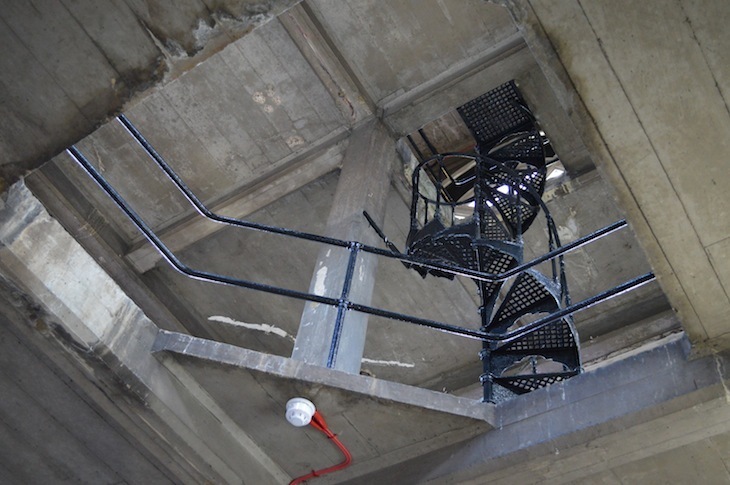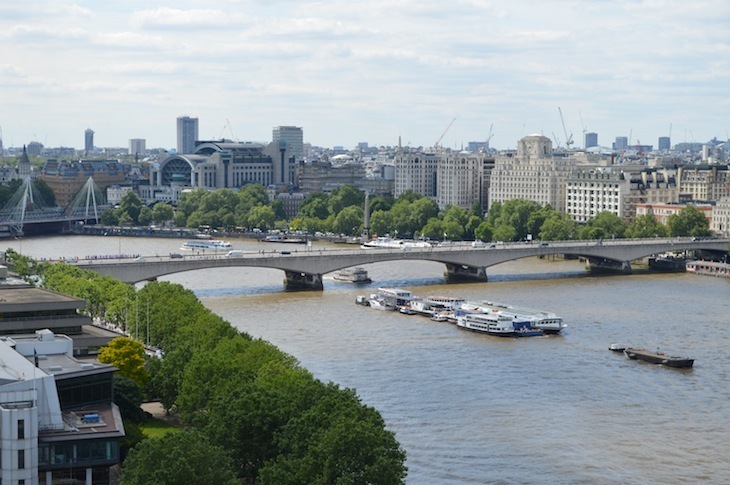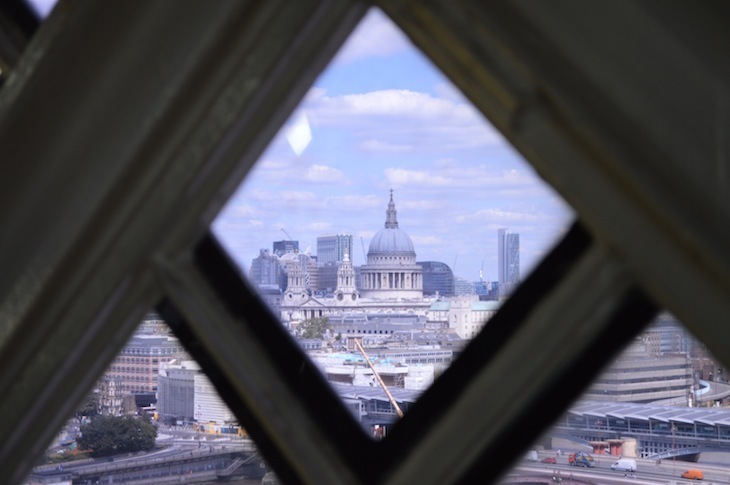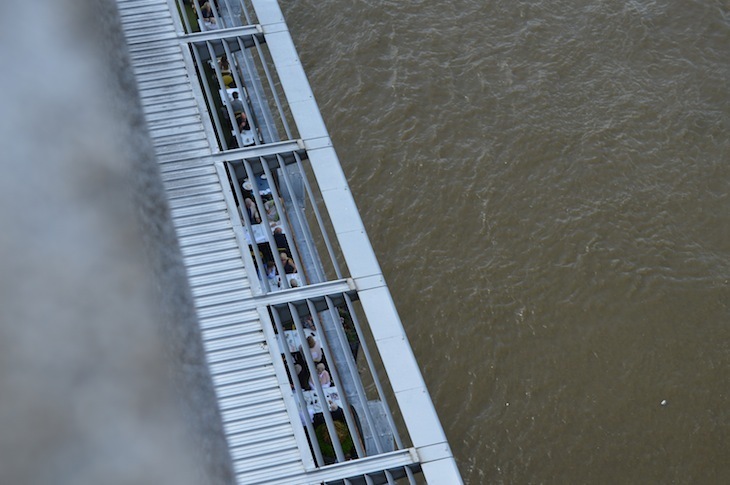
The Oxo Tower complex is many things to many people: a good restaurant for dates, a swanky bar with a view, a leading example of cooperative housing or a place to browse galleries and craft shops. To some, it's the hug-kiss-hug building. To others, taking one's partner up the Oxo Tower has an altogether saucier meaning.
But why is it called Oxo Tower Wharf, and what's with that distinctive tower? We climbed to the very top, to find out.

The tower is accessed from a hidden, locked door near the kitchens of the restaurant. It contains a series of concrete floors connected by spiral staircases. The tower is as tall as the building it sits upon — an eight-storey climb to the pinnacle. It is otherwise empty, and has the character of a film set — a brutalist Batcave, or the entrance to Torchwood.

The space is rarely open to anyone except maintenance workers, so if you're going to conquer the Oxo tower you need to watch your step and have a head for heights. The staircases get increasingly slender as we rise. You might not have noticed it, but the building tapers for its final 'O' (see top photo).
The final floor leads out onto a viewing gallery, offering gorgeous panoramas north, south and west. The view to the east is blocked by the Sea Containers building, but the City skyline refuses to be hidden.

The tower is crowned with a copper bauble. Behind, the recently stretched South Bank Tower rises still higher into Southwark skies.

Our guide now recounts the building's fascinating history. Oxo Tower Wharf was originally built at the end of the 19th century as a power station for Royal Mail. A couple of decades later, it was acquired by the Liebig Extract of Meat Company, makers of Oxo stock. Yes, the great O-X-O running down the side of the tower really is related to the meaty cubes.
The company largely rebuilt the wharf, adding the distinctive tower as a landmark in 1929.

Now here's the fun bit. The company originally applied to decorate the tower with illuminated signs spelling out Oxo. Its planning application was turned down, thanks to a ban on advertising along the South Bank. Instead, the three letters were incorporated into the structure of the building. This was architecture, not advertising, and it allowed the company to circumvent the rules.

That, at least, is the story, reaffirmed by a representative of Coin Street Community Builders, who now own the tower. Even so, we've never been able to find any paperwork to confirm the story. There may be some truth to the tale, but take it with a pinch of salt — or stock. Photos just a few years later show the building with additional advertising.

The colourful history continued. In December 1945, one of the more peculiar armed robberies in London's history took place at the factory, then called Stamford Wharf.

Image © Trinity Mirror. Image created courtesy of The British Library Board.
Presumably, the birds would have fetched a handsome price on the Christmas black market, with rationing still in place.
Today, the tower complex is no turkey. It remains a popular destination with diners, drinkers and shoppers. It's also home to 78 flats in a cooperative, low-rent housing scheme — just one part of the 13 acres owned and developed (mostly as housing) by Coin Street.

Sadly, the tower isn't open to public tours, but you can get a hint of the views by visiting the eighth-floor bar or restaurant at any time. Oxo and turkey are both absent from the menu.

With thanks to Coin Street Community Builders and South Bank London for arranging our visit. Follow them on @CoinStreet and @SouthBankLondon.




